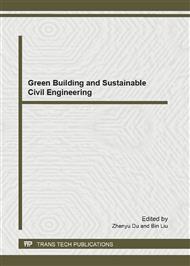p.1
p.6
p.11
p.16
p.21
p.27
p.32
p.37
The Study on High Building Structures Decentralized Vibration Control
Abstract:
An interesting result that has been observed here is that systems that have two-level hierarchical control can exhibit a special form of fault-tolerance.. This concept is illustrated using an example of displacement control in a 4 floor building subject to seismic excitation. The two-level system performance, for both actuator malfunctions and model uncertainties is compared with a centralized robust control design using H-∞ optimization with respect to the exogenous seismic inputs.
Info:
Periodical:
Pages:
1-5
Citation:
Online since:
October 2012
Authors:
Keywords:
Price:
Сopyright:
© 2012 Trans Tech Publications Ltd. All Rights Reserved
Share:
Citation:


